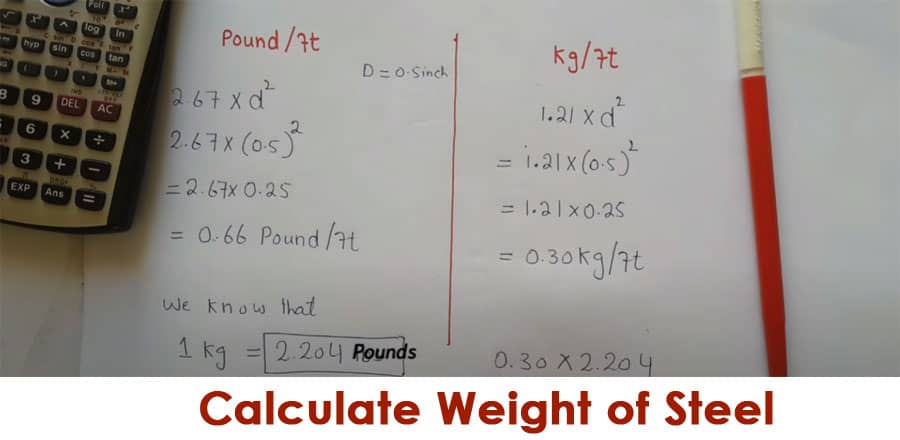Brief Note on Calculate Weight of Steel

Steel is a tough metal made by treating iron with great heat and mixing carbon with it. It has high tensile strength and has a lower cost, and as a reason, it is used in many buildings, tools, ships, infrastructure, ships, trains, cars, machines, weapons, electrical appliances. The base metal of steel is iron.
Steel can either be machined, moulded or combined with other materials and can be formed into any kind of item imaginable. In construction, steel is a vital element and is available in the forms of tubes, roofs, wires, sheets, etc.
Why is it necessary to get the weight of steel?
In the construction industry, steel is generally priced per unit weight like other raw materials such as sand and concrete.
Steel is available in various shapes and sizes, and pricing steel per unit would mean stable pricing throughout the market. This pricing method is why it is important to know the weight of steel generally.
Knowing the total weight of steel is also necessary as it helps during the time of transport. Buying steel in bulk lowers the cost of any material, so if we know the weight of the total weight of the steel, we can decide how much quantity could be carried at a time, thus saving some money.
Other than these factors, knowing the weight of steel plates that are used in different projects can be used to see if we can build the final product that was being planned to be made.
The total weight of steel will also help us determine the compressive strengths requirements of its supporting structures since steel products can be cumbersome.
How to calculate the weight of steel
Finding out the weight only takes a few steps to accomplish. Firstly we have to know the density of steel alloy. Different types of steel all have different densities, some of which are listed below.
Steel type - Density (kg/m3)
tool steel - 7715
wrought iron - 7750
carbon tool steel - 7820
cold-drawn steel - 7830
carbon steel - 7840
C1020 HR steel - 7850
pure iron - 7860
mild steel - 7870
stainless steel - 8030
After getting the density of the steel alloy that is being used, the second step is to know the total volume of the steel material. Obtaining the volume of a steel material depends on its dimensions and shapes. By the use of some necessary formulas, the volume of different steel items such as rods, plates, tubes, bars, and other complicated shapes.
The formulas that are followed in order to calculate the weight of the steel are
Where,
D = Diameter of the bar in millimeter
L = Length of the bar in meter
If the length is in meter:
We have to multiply the total length of the bar with the following unit weight.
For,
10mm TMT bar = 0.617 kg/m
12mm TMT bar = 0.888 kg/m
16mm TMT bar = 1.580 kg/m
20mm TMT bar = 2.469 kg/m
25mm TMT bar = 3.858 kg/m
If the length is in foot:
We have to multiply the total length of the bar with the following unit weight
For,
10mm TMT bar = 0.188 kg/ft
12mm TMT bar = 0.270 kg/ft
16mm TMT bar = 0.480 kg/ft
20mm TMT bar = 0.750 kg/ft
25mm TMT bar = 1.172 kg/ft
After obtaining the volume of the steel material, we have to use the formula given below:
Weight of steel plate = steel plate's volume * density
While using this formula, we must always make sure to multiply values with the same units of measurements. It must be the same unit of measurement as the volume part in the density unit.
Thus following these methods and formulas, a person can determine the weight of steel.
To learn more, watch the following video tutorial.
